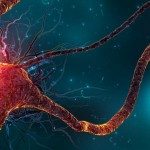About
The function of neocortical excitatory and inhibitory neurons is under constant control of neuromodulators such as acetylcholine, noradrenaline, dopamine, serotonin and adenosine. Some of these neuromodulatory transmitters (e.g. acetylcholine) can activate ligand-gated ion channels; however, most act via G-protein coupled receptors which alter the excitability of neurons but also the synaptic release probability. Using patch-clamp recordings and correlated morphological analysis we have studied the effects of several neuromodulators, in particular those of adenosine (a product of ATP degradation) and acetylcholine. We found that their effects are highly cell-specific leading to up- or down-regulation of the excitability of identified neuron types and the synaptic transmission between them. These effects can be exerted at low concentrations and over relatively large distances, thereby altering the cortical-subcortical signal flow.
Contact: Florent Haiss – florent.haiss@pasteur.fr
Location
Building: Fernbach (68)
Address: 25 Rue du Dr Roux, 75015 Paris, France



